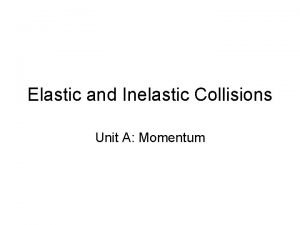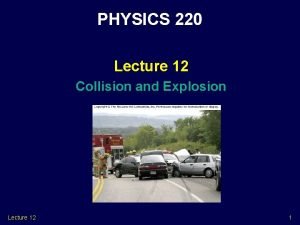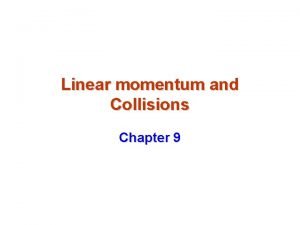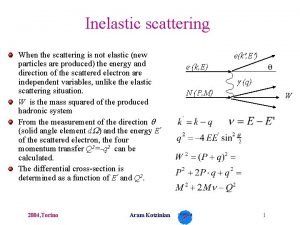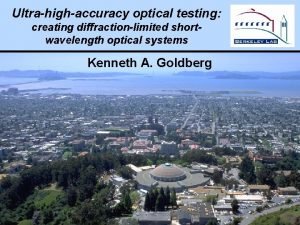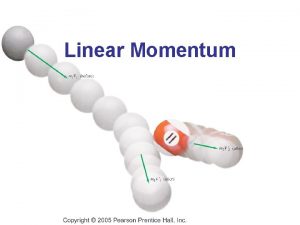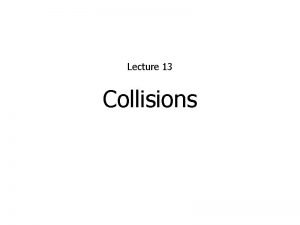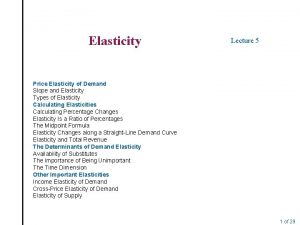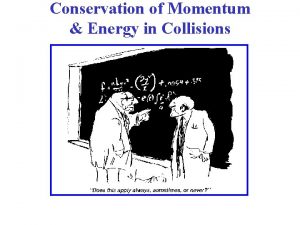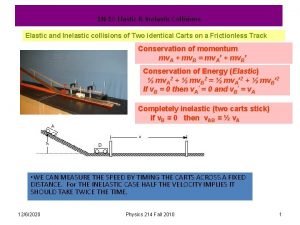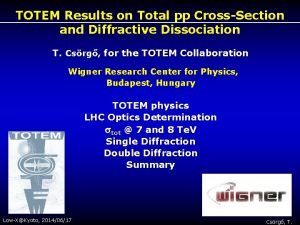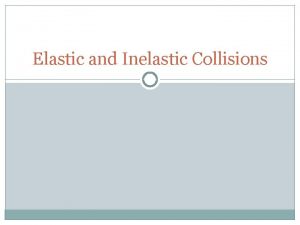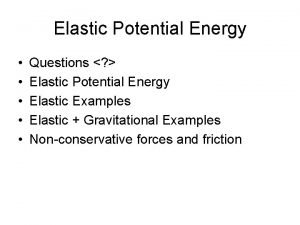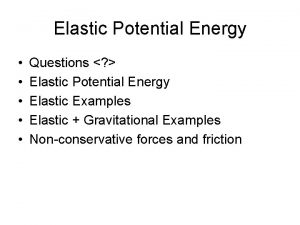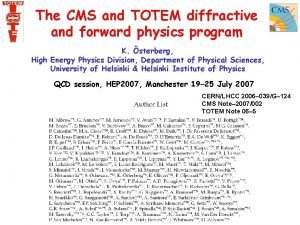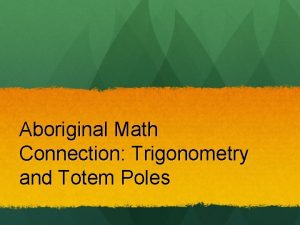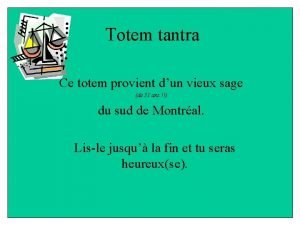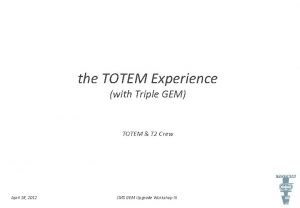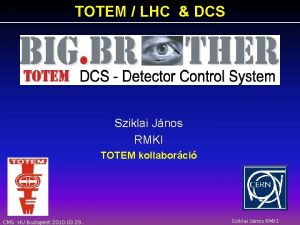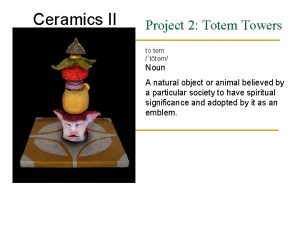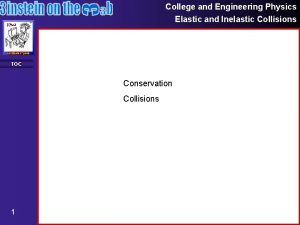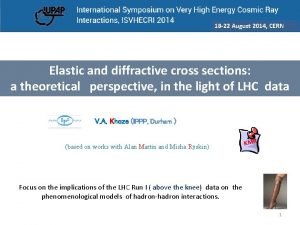TOTEM results on total elastic inelastic and diffractive


![Experimental Setup at IP 5 [Ref. : JINST 3 (2008) S 08007] Inelastic Telescopes: Experimental Setup at IP 5 [Ref. : JINST 3 (2008) S 08007] Inelastic Telescopes:](https://slidetodoc.com/presentation_image_h/3333b60fd753383ac92fcd0f863c3fa4/image-3.jpg)














- Slides: 17

TOTEM results on total, elastic, inelastic and diffractive scattering Heimo Saarikko University of Helsinki & HIP LHCP 2015 St. Petersburg - September 4, 2015 1

Overview • TOTEM detector setup @ IP 5 of LHC • Elastic p-p scattering • Inelastic and total p-p cross-sections • Measurement in Coulomb (interference) region • Diffractive cross-sections • Summary 2
![Experimental Setup at IP 5 Ref JINST 3 2008 S 08007 Inelastic Telescopes Experimental Setup at IP 5 [Ref. : JINST 3 (2008) S 08007] Inelastic Telescopes:](https://slidetodoc.com/presentation_image_h/3333b60fd753383ac92fcd0f863c3fa4/image-3.jpg)
Experimental Setup at IP 5 [Ref. : JINST 3 (2008) S 08007] Inelastic Telescopes: charged particles in inelastic events: multiplicities, rapidity gaps T 1: 3. 1 < | | < 4. 7 , p. T > 100 Me. V T 2: 5. 3 < | | < 6. 5 , p. T > 40 Me. V Inelastic Trigger HF (CMS) IP 5 ~ 10 m ~ 14 m T 1 CASTOR (CMS) T 2 Roman Pots: elastic & diffractive protons close to outgoing beams Proton Trigger IP 5 p. 3 Mario Deile – RP 220 3

Experimental Setup at IP 5 Inelastic telescopes: rapidity gaps T 1 T 2 IP 5 ~ 10 m ~ 14 m T 1 HF (CMS) Roman Pots: diffractive protons (di-proton Si-det stack Horizontal Pot T 2 CASTOR trigger) (CMS) Vertical Pots BPM IP 5 RP 147 RP unit RP 220 4

TOTEM Physics at LHC TOTEM TOTEM TOTEM Elastic and diffractive scattering: Pomeron exchange 5

Elastic pp Scattering: selection&data sets Selected based on topology, low | |, collinearity, & vertex Key issues: RP alignment & optics Data sets at different conditions to measure elastics over wide t-range including very low |t| � * = 1 km, 3 , 8 Te. V * = 90 m, 10 , 7 Te. V 8 M * = 90 m, 5 , 7 Te. V * = 90 m, 6 -9 , 8 Te. V * = 3. 5 m, 7 Te. V * = 3. 5 m, 18 , 7 Te. V * = 11 m, 5 -13 , 2. 76 Te. V Show results from data sets indicated by arrows 6

TOTEM d�el/d|t| Measurement @ 7 Te. V None of theoretical models really fit the data |t|dip= 0. 53 Ge. V 2 ~ |t| 7. 8 TOTEM 7 Te. V: A = 506 23. 0 syst 0. 9 stat mb/Ge. V 2 B = 19. 89 0. 27 syst 0. 03 stat Ge. V-2 (fit range: 5 10 3 < |t| < 0. 2 Ge. V 2) TOTEM 8 Te. V: B = 19. 90 ± 0. 30 Ge. V 2 (fit range: 1 10 2 < |t| < 0. 2 Ge. V 2) ATLAS 7 Te. V: B = 19. 73 0. 26 syst 0. 14 stat Ge. V-2 EPL 95 (2011) 41001 (fit range: 0. 01 < |t| < 0. 1 Ge. V 2) EPL 96 (2011) 21002 EPL 101 (2013) 21002 7 Te. V el = 25. 4 ± 1. 0 lumi ± 0. 3 syst ± 0. 03 stat mb (L from CMS with 4% unc. ) el = 24. 8 ± 1. 0 lumi ± 0. 7 syst ± 0. 2 stat mb (L independent) 8 Te. V el = 27. 1 ± 1. 2 syst+stat mb ATLAS result: 7 Te. V el = 24. 00 ± 0. 57 syst ± 0. 19 stat mb TOTEM results: (L with 2. 3% uncertainty) (91% directly measured) (67% directly measured) (90% directly measured) 7

Direct �inel Measurement ● Count events with charged particles in T 1 & T 2 ( 95 % of inelastic). ● Trigger: at least one track in T 2. x/s. SD ds. SD/dx MX > 3. 4 Ge. V/c 2 (TOTEM) Impact of Low-Mass diffraction: ● ● Extrapolation to low MX region: main source of systematic uncertainty on inel Minimal MX depends on maximal | | coverage: lower MX reachable minimal model dependence on corrections for low mass diffraction S. Ostapchenko ar. Xiv: 1103. 5684 v 2 [hepph] QGSJET-II-4 SIBYLL / PYTHIA 8 low mass contribution TOTEM (T 1+T 2: 3. 1 < | | < 6. 5) gives an unique forward charged particle coverage @ LHC direct measurement of inel with lower sys. unc. Low mass diffraction @ Mdiff < 3. 4 -3. 6 Ge. V (tuned QGSJETII-03 to observed 1 hemi fraction) inelastic Direct @ 7 Te. V 73. 7 3. 4 mb MX > 15. 7 Ge. V/c 2 (ATLAS, CMS) @ 8 Te. V EPL 101 (2013) 21003 Indirect L independent 73. 15 1. 26 mb EPL 101 (2013) 21002 72. 9 1. 5 mb EPL 101 (2013) 21004 74. 7 1. 7 mb PRL 111 (2013) 012001 8

Low-Mass Diffraction: Constraint from Nel Constraint on low mass diffraction cross-section from TOTEM data: Use total cross-section determined from elastic observables (via the Optical Theorem) no assumption on low mass diffraction inel = tot – el = 73. 2 1. 3 mb and the measured “visible” inelastic cross-section for | | < 6. 5 (T 1, T 2) inel, | | < 6. 5 = 70. 5 2. 9 mb to obtain the low-mass diffractive cross-section (| | > 6. 5 or MX < 3. 4 Ge. V/c 2 inel, | | > 6. 5 = inel - inel, | | < 6. 5 = 2. 6 2. 2 mb (or < 6. 3 mb @ 95% CL) [MC: 3. 1 1. 5 mb] 9

Total Cross Section Measurements @ 7 Te. V 1) Elastic Scatt. + Inelastic Scatt. + L (no dependence on ρ) tot = el + inel 2) Elastic Scatt. + L + Optical Th. (no assumption on low mass diffr. ) inel = tot - el 3) Elastic Scatt. + Inel. Scatt. + Optical Th. (no dependence on L ) el and inel : from tot and Nel /Ninel Method �tot (mb) �inel (mb) �el (mb) Reference 25. 4 � 1. 1 EPL 101 (2013), 21002 EPL 101 (2013), 21003 1 99. 1 � 4. 3 2 98. 3 � 2. 8 73. 5 � 1. 6 24. 8 � 1. 2 EPL 96 (2011), 21002 2 98. 6 � 2. 2 73. 2 � 1. 3 25. 4 � 1. 1 EPL 101(2013), 21002 3 98. 0 � 2. 5 72. 9 � 1. 5 25. 1 � 1. 1 2 95. 35� 1. 36 71. 3 � 0. 9 24. 0 � 0. 6 EPL 101 (2013), 21004 ATLAS / Nucl. Phys. B 889 (2014) 73. 7 � 3. 4 ρ = 0. 140 0. 007 (from Compete) Proper tracking acceptance in very forward region required: elastically scattered p detection mandatory 10

TOTEM �tot Measurement @ 8 Te. V & Summary Analysis in progress at s = 2. 76 Te. V tot from L –independent Method 7 & 8 Te. V TOTEM @ 8 Te. V PRL 111 (2013) 012001 11

d�el/d|t| Measurement @ 8 Te. V with High Statistics High statistic data sample allows a precise d el/d|t| measurement (for 0. 027 < |t| < 0. 2 Ge. V 2) “Purely” exponential slope excluded with a significance > 7 Plotting relative deviation from exponential and fitting ds/dt = A e-B(t) |t| , ( d el/d|t| = Ae-B(t|)t|) with B(t) = b 1 (Nb = 1) or B(t) = b 1 + b 2 t (Nb = 2) or B(t) = b 1 + b 2 t + b 3 t 2 (Nb = 3) TOTEM New! Nucl. Phys. B 899 (2015) 527 No = 1: B = b 1 (Reference) Nb = 2: B = b 1 + b 2 t Nb = 3: B = b 1 + b 2 t + b 3 t 2 Ø Quadratic and cubic polynomials in the exponent well describe data Ø Using the new parametrisations for extrapolation to t = 0 and applying the optical theorem, new results for tot are found in agreement with previous measurement: Nb = 2 (quadratic polynomial) Nb = 3 (cubic polynomial) tot = 101. 5 2. 1 mb tot = 101. 9 2. 1 mb 12

Elastic Scattering in the Coulomb-Nuclear Interference (CNI) Region � * = 1 km, 3� M ary TE in TO elim Pr Measurement of r by studying the CNI down to |t| ~ 6 10 -4 Ge. V 2 Reached @ s = 8 Te. V, with b* = 1000 m and RP approaching the beam centre @ ~ 3 13

Analysis of CNI Region d�/dt �|FC+H|2 = Coulomb + “interference” + hadronic - Interference formulae: + Simplified West-Yennie (SWY) [1]: past “standard”, only compatible with pure exponential hadronic amplitude with constant phase + Kundrát-Lokajícek (KL) [2]: no limitations on hadronic amplitude - phase of FH: central or peripheral �b = impact parameter of elastic pp collisions ��Re FH/ Im FH�t=0 = 1 / tan(�� t=0) modulus constrained by measurement e�B(t) = b 1 t + b 2 t 2 + … Nb = # parameters in exp. P(b) from QED P(b) �(phase of FH) accessible via interference with FC (known)! ”Central” ”Peripheral”: b (fm) Best fit method retained: 2 -stage fit: Fit 1: only b*=1 km data (very low |t|): all parameters free determines r [1] G. B. West and D. R. Jennie, Phys. Rev. 172 (1968)1413. [2] V. Kundrát and M. Lokajıcek, Z. Phys. C 63 (1994) 619. Fit 2: combined b*=1 km and 90 m data with fixed r Results coming soon 14

Soft Single Diffraction @ 7 Te. V d /dt ~ A·e-Bt mb/Ge. V 2 Low mass Mdiff = 3. 4 - 8 Ge. V T 2 T 1 CMST 1 T 2 SD, low Mdiff 1. 8 mb Mdiff = 8 - 350 Ge. V CMST 1 T 2 SD, medium Mdiff 3. 3 mb B = 8. 5 Ge. V- 2 Mdiff = 0. 35 - 1. 1 Te. V T 2 T 1 CMST 1 T 2 mb/Ge. V 2 TO High mass TE M Pre T 2 T 1 lim mb/Ge. V 2 Medium mass ina ry B = 10. 1 Ge. V- 2 Corrections included: - Trigger efficiency - Proton acceptance & reconstruction efficiency - Background subtraction - Extrapolation to t = 0 Missing corrections: Class migration � resolution & beam divergence effects Estimated uncertainties: B ~ 15% ; �~ 20% TOTEM preliminary: SD, high Mdiff 1. 4 mb B = 6. 8 SD = 6. 5 ± 1. 3 mb 3. 4 Ge. V < Mdiff < 1. 1 Te. V Ge. V- 2 Analysis of very high mass SD events ongoing 15

Soft Double Diffraction @ 7 Te. V • Both protons break up � 2 diffractive masses Mdiff 1, Mdiff 2 • Central rapidity gap |h|min, 2 |h|min, 1 For large masses ( small central gap) not easy to separate from ND events Select: sub-range with particles in both T 2 hemispheres, veto on both T 1 (“ 0 T 1+2 T 2”) 4. 7 < | |min, 1/2 < 6. 5 or 3. 4 Ge. V < Mdiff 1/2 < 8 Ge. V = 4. 7 T 1 T 2 IP = 6. 5 Event selection with high DD purity (� 70 %) 116� 25 �b SD & DD results combined seems to indicate factorisation breaking since � |� 6. 5) >> DD (4. 7 � min| � � 4. 7 �� � 6. 5) / � SD (� min � SD (4. 7 � min � elastic PRL 111 (2013) 262001 16

Summary and Outlook q Extensive programme of �tot, �el, �inel and diffractive scattering measurements @ LHC in Run I q @ �s = 7 Te. V collision data taken in special runs with different beam conditions (�* = 3. 5 m, 90 m) allowed measurements of: - elastic scattering in a wide |t| range (5· 10 -3 < |t| < 3. 5 Ge. V 2) - elastic, inelastic and total p-p cross-section (very good agreement among results from different experiments) - soft single and double diffraction q @ �s = 8 Te. V collision data taken in special runs with different beam conditions (�* = 90 m, 1000 m) and high statistics gave measurements of: - elastic scattering down to very low |t| (6· 10 -4 < |t| < 0. 2 Ge. V 2) �evidence for non-exponential slope �study of Coulomb-Nuclear interference feasible, more to come soon … - elastic, inelastic and total p-p cross-section (L-independent only) q Looking forward for new data during LHC Run II, so to perform new measurements at higher �s. . 17
 Elastic vs inelastic vs perfectly inelastic
Elastic vs inelastic vs perfectly inelastic Elastic vs inelastic collision
Elastic vs inelastic collision Explosion collision physics
Explosion collision physics Types of collisions worksheet
Types of collisions worksheet Combined velocity after collision formula
Combined velocity after collision formula Elastic scattering vs inelastic
Elastic scattering vs inelastic Diffractive null test
Diffractive null test Hyaline cartilage
Hyaline cartilage Perfectly inelastic collision
Perfectly inelastic collision Inelastic collision examples
Inelastic collision examples How to find kinetic energy lost in inelastic collision
How to find kinetic energy lost in inelastic collision Elasticity measures
Elasticity measures How to find slope of a demand curve
How to find slope of a demand curve ∆qd ÷ ∆p
∆qd ÷ ∆p Perfectly inelastic demand
Perfectly inelastic demand Consumer and producer surplus
Consumer and producer surplus Does an elastic collision conserve momentum
Does an elastic collision conserve momentum Momentum between two objects
Momentum between two objects
